2022–23 UEFA Europa League
The 2022–23 UEFA Europa League will be the 52nd season of Europe's secondary club football tournament organised by UEFA, and the 14th season since it was renamed from the UEFA Cup to the UEFA Europa League.
 The Puskás Aréna in Budapest will host the final | |
| Dates | Qualifying: 4–25 August 2022 Competition proper: 8 September 2022 – 31 May 2023 |
|---|---|
The final will be played at the Puskás Aréna in Budapest, Hungary. The winners of the tournament will automatically qualify for the 2023–24 UEFA Champions League group stage, and also earn the right to play against the winners of the 2022–23 UEFA Champions League in the 2023 UEFA Super Cup.
Association team allocation
A total of 58 teams from between 31 and 36 of the 55 UEFA member associations are expected to participate in the 2022–23 UEFA Europa League. Among them, 15 associations have teams directly qualifying for the Europa League, while for the other 40 associations that do not have any teams directly qualifying, between 15 and 20 of them may have teams playing after being transferred from the Champions League (the only member associations which cannot have a participant are Russia and Liechtenstein, which does not organise a domestic league, and can only enter their cup winner into the Europa Conference League given their association ranking). The association ranking based on the UEFA country coefficients is used to determine the number of participating teams for each association:[1]
- The title holders of the UEFA Europa Conference League will be given an entry in the Europa League (if they do not qualify to the Champions League group stage).
- Associations 1–5 each have two teams qualify.
- Associations 6–7 and 9–15 each have one team qualify.
- 37 teams eliminated from the 2022–23 UEFA Champions League are transferred to the Europa League.
Association ranking
For the 2022–23 UEFA Europa League, the associations are allocated places according to their 2021 UEFA country coefficients, which takes into account their performance in European competitions from 2016–17 to 2020–21.[2]
Apart from the allocation based on the country coefficients, associations may have additional teams participating in the Europa League, as noted below:
- (UCL) – Additional teams transferred from the UEFA Champions League
|
|
|
Distribution
The following is the access list for this season.[3]
Due to the suspension of Russia for the 2022–23 European season, the following changes to the access list have been made:
- The cup winners of associations 13 (Turkey) and 14 (Denmark) enter the play-off round instead of the third qualifying round.
- The cup winners of association 16 (Serbia) enter the third qualifying round instead of the Europa Conference League second qualifying round.
| Teams entering in this round | Teams advancing from previous round | Teams transferred from Champions League | ||
|---|---|---|---|---|
| Third qualifying round (14 teams) |
Champions Path (10 teams) |
| ||
| Main Path (4 teams) |
|
| ||
| Play-off round (20 teams) |
|
|
| |
| Group stage (32 teams) |
|
|
| |
| Preliminary knockout round (16 teams) |
|
| ||
| Knockout phase (16 teams) |
|
|||
Teams
The labels in the parentheses show how each team qualified for the place of its starting round:
- CW: Cup winners
- 4th, 5th, etc.: League position of the previous season
- Abd-: League positions of abandoned season as determined by the national association; all teams are subject to approval by UEFA
- UCL: Transferred from the Champions League
- GS: Third-placed teams from the group stage
- CH/LP PO: Losers from the play-off round (Champions/League Path)
- CH/LP Q3: Losers from the third qualifying round (Champions/League Path)
- CH/LP Q2: Losers from the second qualifying round (Champions/League Path)
The third qualifying round is divided into Champions Path (CH) and Main Path (MP).
Note: Teams in italics may still qualify for the 2022–23 UEFA Champions League through domestic performance.
CC: 2022 UEFA club coefficients.[4]
| Entry round | Teams | ||||
|---|---|---|---|---|---|
| Knockout round play-offs | |||||
| Group stage | |||||
| Play-off round | |||||
| Third qualifying round | CH | ||||
| MP | |||||
Notes
- ^ Netherlands (NED): PSV may still qualify for the 2022–23 UEFA Champions League by their final league position.
- ^ Russia (RUS): On 28 February 2022, Russian football clubs and national teams were suspended from FIFA and UEFA competitions due to the 2022 Russian invasion of Ukraine.[5] On 2 May 2022, UEFA confirmed that Russian clubs would be excluded from the 2022–23 UEFA competitions.[6]
- ^ Spain (ESP): Real Betis may still qualify for the 2022–23 UEFA Champions League by their final league position.
- ^ Ukraine (UKR): The 2021–22 Ukrainian Cup was abandoned due to the 2022 Russian invasion of Ukraine. The berth reserved for the cup winners was transferred to the third-placed team of the league at the time of the abandonment, SC Dnipro-1, who were selected to play in the 2022–23 UEFA Europa League by the Ukrainian Association of Football.
Schedule
The schedule of the competition is as follows. Matches are scheduled for Thursdays apart from the final, which takes place on a Wednesday, though exceptionally can take place on Tuesdays or Wednesdays due to scheduling conflicts. Scheduled kick-off times starting from the group stage are 18:45 and 21:00 CEST/CET, though exceptionally can take place at 16:30 due to geographical reasons.
All draws are held at the UEFA headquarters in Nyon, Switzerland.[7]
| Phase | Round | Draw date | First leg | Second leg |
|---|---|---|---|---|
| Qualifying | Third qualifying round | 18 July 2022 | 4 August 2022 | 11 August 2022 |
| Play-offs | 1 August 2022 | 18 August 2022 | 25 August 2022 | |
| Group stage | Matchday 1 | 26 August 2022 | 8 September 2022 | |
| Matchday 2 | 15 September 2022 | |||
| Matchday 3 | 6 October 2022 | |||
| Matchday 4 | 13 October 2022 | |||
| Matchday 5 | 27 October 2022 | |||
| Matchday 6 | 3 November 2022 | |||
| Knockout phase | Knockout round play-offs | 7 November 2022 | 16 February 2023 | 23 February 2023 |
| Round of 16 | 24 February 2023 | 9 March 2023 | 16 March 2023 | |
| Quarter-finals | 17 March 2023 | 13 April 2023 | 20 April 2023 | |
| Semi-finals | 11 May 2023 | 18 May 2023 | ||
| Final | 31 May 2023 at Puskás Aréna, Budapest | |||
Qualifying rounds
Third qualifying round
The draw for the qualifying round will be held on 18 July 2022. Teams from the same association cannot be drawn against each other. The first team drawn in each tie will be the home team of the first leg.
- Qualified teams
|
Champions Path
|
Main Path Seeded:
Unseeded:
|
Play-off round
The draw for the play-off round will be held on 1 August 2022.
- Qualified teams
|
Priority 1:
|
Priority 2:
Priority 3:
Priority 4:
|
Group stage
The draw for the group stage will be held on 26 August 2022. The 32 teams were drawn into eight groups of four. For the draw, the teams were seeded into four pots, each of eight teams, based on their 2022 UEFA club coefficients. Teams from the same association could not be drawn into the same group.
- 2021–22 UEFA Europa Conference League title holders
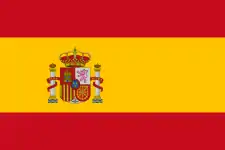 Real Betis CC: 21.000
Real Betis CC: 21.000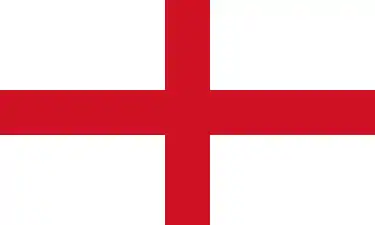 Winners of 2021–22 FA Cup
Winners of 2021–22 FA Cup Sixth place of 2021–22 Premier League
Sixth place of 2021–22 Premier League Fifth place of 2021–22 La Liga
Fifth place of 2021–22 La Liga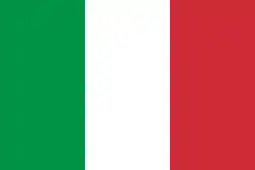 Fifth place of 2021–22 Serie A
Fifth place of 2021–22 Serie A Sixth place of 2021–22 Serie A
Sixth place of 2021–22 Serie A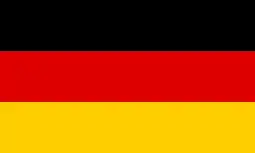 Winners of 2021–22 DFB-Pokal
Winners of 2021–22 DFB-Pokal Fifth place of 2021–22 Bundesliga
Fifth place of 2021–22 Bundesliga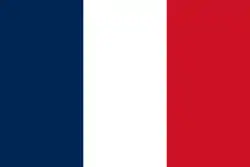 Winners of 2021–22 Coupe de France
Winners of 2021–22 Coupe de France Fourth place of 2021–22 Ligue 1
Fourth place of 2021–22 Ligue 1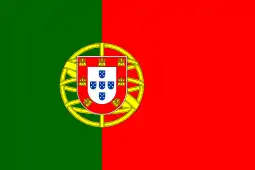 Winners of 2021–22 Taça de Portugal
Winners of 2021–22 Taça de Portugal- 10 Winners of play-off round
- 4 Losers of the Champions League play-off round (Champions Path)
- 2 Losers of the Champions League play-off round (League Path)
- 4 Losers of the Champions League third qualyfing round (League Path)
See also
References
- "Regulations of the UEFA Europa League, 2021/22 Season". UEFA.com. Union of European Football Associations. 2021. Retrieved 30 April 2021.
- "Country coefficients 2020/21". UEFA.com. Union of European Football Associations. 2020. Archived from the original on 4 December 2019. Retrieved 16 February 2020.
- "Access list 2021–24" (PDF). UEFA.com. Union of European Football Associations. Archived (PDF) from the original on 4 December 2018. Retrieved 16 February 2020.
- "Club coefficients 2021/22". UEFA.com. Union of European Football Associations.
- "Ukraine crisis: Fifa and Uefa suspend all Russian clubs and national teams". bbc.co.uk. British Broadcasting Corporation. 28 February 2022. Retrieved 28 February 2022.
{{cite news}}: CS1 maint: url-status (link) - "Uefa announces further sanctions on Russian clubs and national teams amid Ukraine invasion". British Broadcasting Corporation. 2 May 2022.
- "2022 European football calendar: Match and draw dates for all UEFA competitions". UEFA. 1 January 2022. Retrieved 6 January 2022.
- "International match calendar and access list for 2022/23". UEFA Circular Letter. No. 51/2021. Union of European Football Associations. 19 July 2021. Retrieved 5 November 2021.